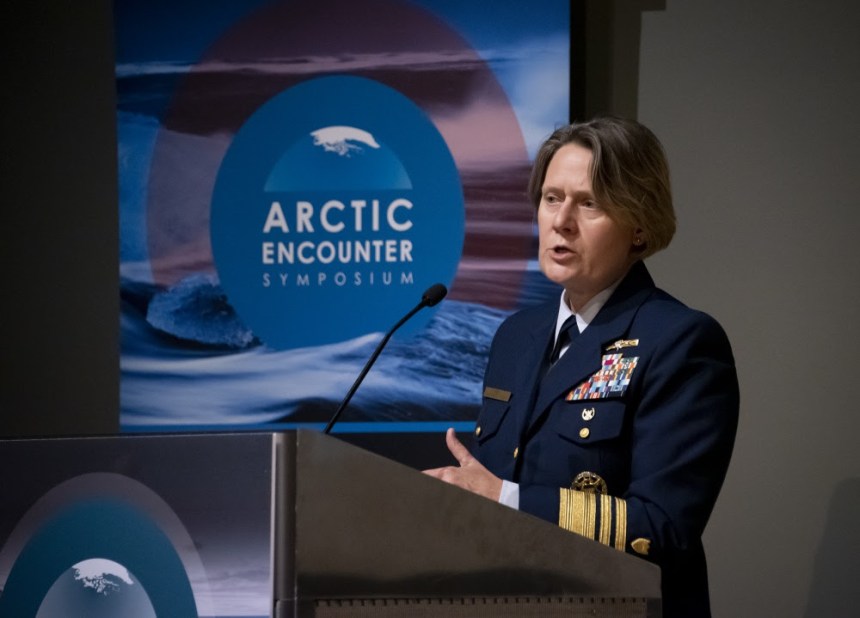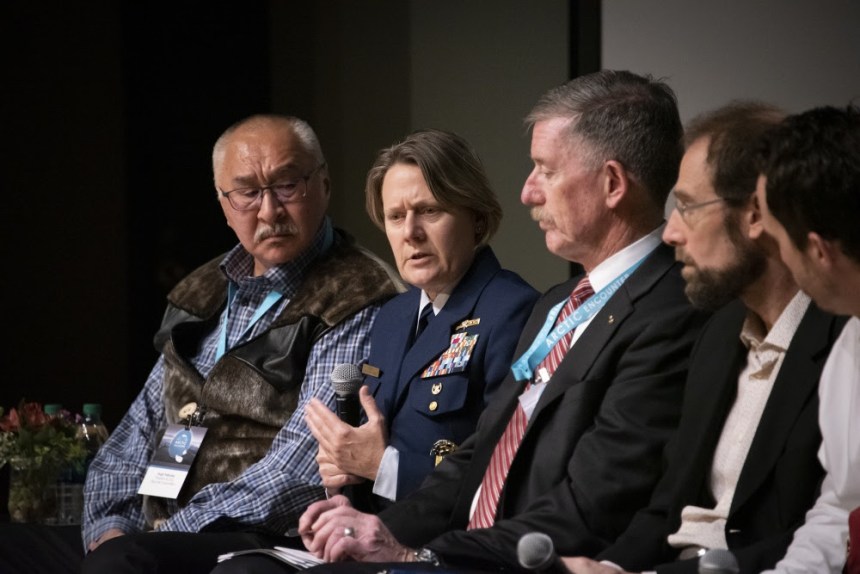U.S. Coast Guard Discusses Its Developing Role in the Arctic

SEATTLE — The U.S. Coast Guard’s Pacific Area commander discussed the service’s strategic outlook for the Arctic, its new class of polar security cutters, and its efforts to improve maritime domain awareness in the high latitudes. The keynote speech given by Vice Adm. Linda Fagan was during the Arctic Encounter Symposium in Seattle, Washington.
The U.S. Coast Guard (USCG) recently released the Arctic Strategic Outlook, a report which reaffirms the service’s commitment to American leadership in the region through partnership, unity of effort and continuous innovation.
Presently, the USCG maintains two icebreakers: Coast Guard Cutter Healy, which is a medium icebreaker, and Polar Star, the United States’ only heavy icebreaker. If Healy operating in the Arctic or Polar Star operating near Antarctica ever got stuck in the ice, the USCG would have no self-rescue capability.
The USCG has been the sole provider of the nation’s polar icebreaking capability since 1965, and is seeking to increase its icebreaking fleet with six new polar security cutters in order to ensure continued national presence and access to the polar regions.
The USCG and U.S. Navy recently awarded VT Halter Marine Inc. of Pascagoula, Mississippi, a contract for the design and construction of its lead polar security cutter. The initial award is valued at $745.9 million and supports non-recurring engineering and detail design of the Polar Security Cutter (PSC) class as well as procurement of long lead-time materials and construction of the first ship. The contract also includes options for the construction of two additional PSCs. If all options are exercised, the total contract value is $1.9 billion.
Fagan also discussed USCG deployment of technology in space to better monitor the Arctic. Last December, in conjunction with the DHS Science and Technology Directorate, USCG launched the Polar Scout project, sending two shoe-box sized cube satellites into a low-earth polar orbit. The satellites send data to two ground control stations; one at the U.S. Coast Guard Academy in New London, Connecticut, and the other at the University of Alaska in Fairbanks, Alaska. Named Yukon and Kodiak, the miniature satellites are specifically tailored to detect 406 MHz emergency distress beacons. —USCG

U.S. Coast Guard Vice Adm. Linda Fagan participated in panel discussions April 26, 2019, at the Arctic Encounter Symposium in Seattle. (Image: USCG/Senior Chief Petty Officer NyxoLyno Cangemi)
